King of the strange ecosystem
that originally belong to one region but spread in another are called invasive species. Their proliferation and adaptation to the new residence are factors that often endanger the native species of the "host ecosystem". This type of invasions, in addition to being a serious problem to preserve global biodiversity, are difficult to resolve.
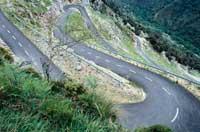
Any ecosystem is based on a complex and fragile balance. If the population of hares increases, for example, the wolves that feed on them will also increase, due to the increase in food. But when the hare population begins to decrease, the wolf population also goes down quickly, as they will not have food. Suppose now man kills the wolves and puts the species in danger of extinction. The hares, therefore, will not have predators in the environment and the population will increase spectacularly as if it were a demographic explosion. This simple example has tried to explain what happens when a specific species is placed in an ecosystem without predators. This is the case of invasive species.
The predators or control mechanisms that keep their population stable over time correspond to each living. The latter are rain, temperature, wind, etc. can be. However, when an organism moves to a strange ecosystem that does not have these control mechanisms, problems arise. It may happen that the foreign organism does not adapt well to the new ecosystem and adapts without it disappearing or producing large imbalances, but the opposite is also very common. That is, without any control, the strange species reproduces and multiplies easily, being able to dominate their own species, and leaves them without place, food and water.
Able to live in Edonon
In
general, biological invaders are species with rapid growth and short breeding cycles. At the same time, they have a great capacity to live in different environments, that is, they do not require strict living conditions for the habitat. Several studies indicate that ecosystems that have undergone degradation or change are preferred by biological invaders, where they are firmly applied.
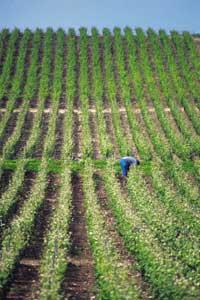
Invasive
species can eat plants and animals of origin, reproduce with them and reduce the genetic diversity of their own species. If new pathogens and parasites are transported to the host ecosystem, they can endanger the original species. Taking things to the extreme, biological invaders can revolutionize the host ecosystem and totally alter its composition.
Biological
invaders are therefore a very important problem, since the second cause of biodiversity loss – the first is habitat destruction – are these species.
Human arrival
Most invasive species have been displaced as a result of human activity, in most cases for economic reasons. For maximum productivity, industrial agriculture has been promoted in many places, that is, in the large rural area a single crop is planted. These industrial uses end up causing a decrease in diversity and a loss of flexibility. When this type of crop is done, diversity descends from hundreds to a single species. Many of the species used in monoculture are also exotic, that is, they are originally different. When these species "escape" from farmland and farmers' control and spread over nearby lands, invasions occur.
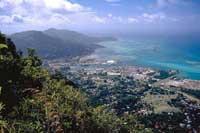
In
general two categories of invaders are distinguished: intentional invaders and intentional invaders. Those who have intentionally entered are, for example, the monocultures mentioned above. What happened on Lake Victoria in Kenya is also significant in this regard. There lived more than 200 species of endemic fish in the late 1950s. But in 1958 the Nile perch, a magnificent predator that inhabits the Nile River, was transferred to the lagoon and in 1962 and 63 the population increased. A year later, the Nile perch was found in Uganda and by 1970 was completely located in Kenya. Biological effects of invasion: The endemic fish species of Lake Victoria have practically disappeared and has evolved to the point that the food network is unrecognizable. Other conclusions: on the one hand, the Nile perch is an excellent source of food for the inhabitants of the environment of Lake Victoria, and on the other, it is the basis of a small industry in rapid development. What has been a disaster for the original fauna has become an important economic asset for its inhabitants.
Invaders
who have accidentally leaked are species that enter the strange ecosystem without anyone noticing. These also travel many times thanks to human beings. In the Great Lakes between Canada and the United States it has been observed that some of the species of mussels, fish and fleas implanted arrived next to the ships. Empty cargo ships use water as ballast to increase stability and release water when loading. Along with the water collected in origin, the ships capture a large number of living species that, once poured in destination, are also released. Numerous strange species of the Great Lakes have come this way and subsequently spread throughout the continent through small passenger ships. Insects also move thanks to humans, such as water and water on the wheels of our car.
A growing problem
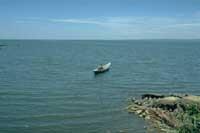
Although invasive alien species are known in nature, human movements that have occurred in recent centuries have greatly aggravated the problem. The economic system we have built has paid special attention to invasions and, likewise, to globalization. And to round everything, the ecological mechanism of invasions is not well known. There is at least one job on time.
Biological control
Do
not allow the best way to combat biological invaders to be implemented, that is, to take measures so that they are not transported back and forth. The International Maritime Organization, for example, has recommended that freighters change ballast water on the high seas. Because the differences between this medium and that of the water arrows are relatively large, the species from the sea will not adapt to the target ecosystem nor will invasions occur. On the other hand, the owners of the engines have been asked to properly check the vessels before moving.
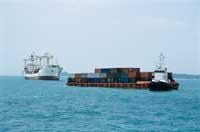
One
option when invasion is a reality is the use of pesticides and herbicides. However, most are toxic and dangerous, so they are only used in very specific cases.
Sometimes they can be removed (collected one by one) from the plant and animal ecosystem. Other times controlled fires or flooding are used against invasions. Biological control is also common.
At the beginning
of the article, one of the factors for the propagation of invasive species has been mentioned: the absence of natural predators. Biological control consists in the introduction of predators of invasive species into the invaded ecosystem, that is, the extinction of a strange species by a strange one. The alien predator does not cause as much damage to the ecosystem as the invasive species and can restore ecological balance. However, this path generates many debates. Environmentalists and conservation groups ask if biological control is safe, rational and necessary, since they are not faithful. Despite the success of several projects, biological control is not an anti-invasion panacea and if not used properly can cause more harm than benefits.
Published in the supplement Natura de Gara
Buletina
Bidali zure helbide elektronikoa eta jaso asteroko buletina zure sarrera-ontzian











